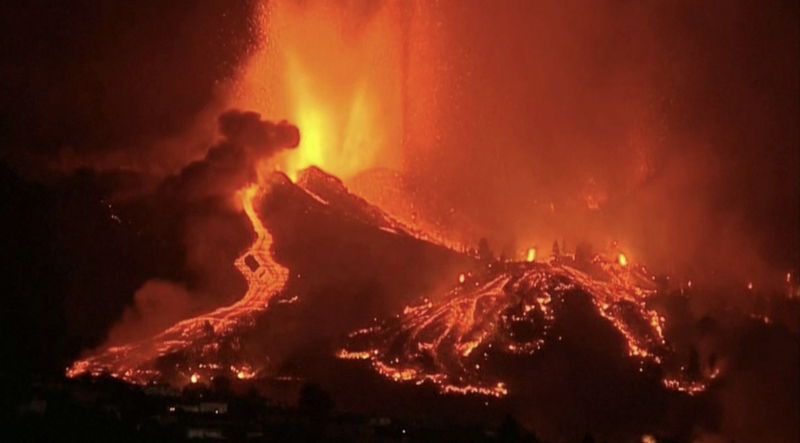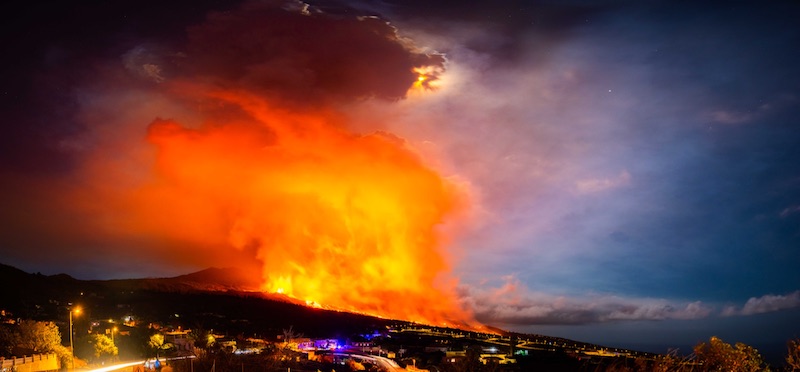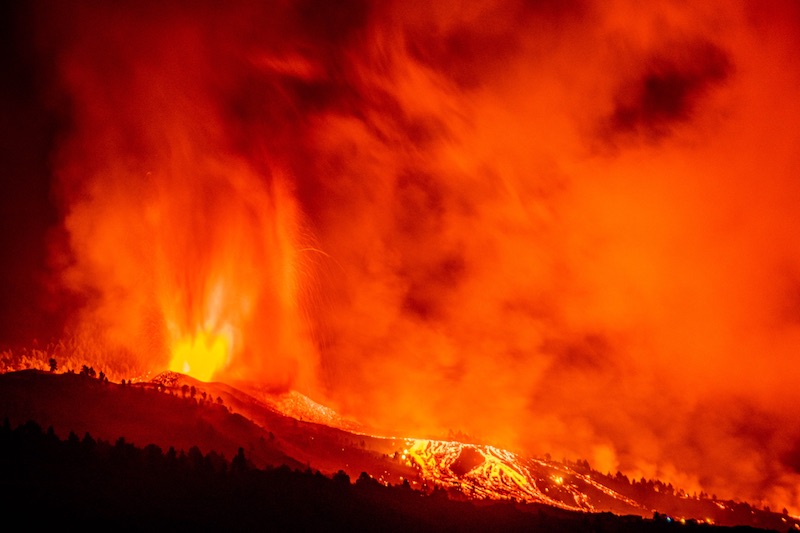
La Palma volcano began erupting on September 19
It’s been two months since a volcano on the Atlantic island of La Palma – part of Spain’s Canary Islands – began to erupt on September 19, 2021. And the La Palma volcano is still erupting. According to the Smithsonian’s Global Volcanism Program, as of November 16 the eruption at La Palma continues to be characterized by:
… Strombolian explosions and lava fountaining from multiple vents, advancing and sometimes branching lava flows, and daily ash emissions.
Almost two months after it began, the La Palma volcano claimed its first victim on November 13. According to reports from Spanish news wire EFE, a 70-year-old man was killed while working as a volunteer cleaning up volcanic ash when the roof of the building he was on collapsed.
On November 19 – the two-month anniversary of the start of the eruption – La Palma’s volcano spewed a billowing cloud of gas and ash. Spain’s National Geographic Institute said that the November 19 volcanic activity included a 5.1-magnitude earthquake, the strongest since eruptions began on September 19.
According to the Spanish news outlet El Pais on November 19, the eruption has forced about 7,000 people (of the 85,000 who live on La Palma) to evacuate. And the lava flow has covered over 1000 hectares (about 4 square miles), which is 1.4% of the total area of La Palma.
Most destructive in living memory
This volcano is widely regarded as the most destructive in La Palma’s living memory. The lava flow is about 0.6 miles (1 km) wide and has reached the sea. According to 20minutos.es, the lava has destroyed more than 2,600 buildings, cut the coastal highway and formed a new peninsula.
The 2021 La Palma eruption is coming from Cumbre Vieja (“Old Peak”), considered to be one of the most active volcanos in the Canary Islands. Footage from local and international media shows the current eruption of red-hot lava and dust emanating from the Cumbre Vieja National Park in the south of the island. This volcano erupted twice in the 20th century, in 1949 and again in 1971. So, before the September 19 eruption began, the last eruption of this volcano on La Palma was 50 years ago. The 1971 eruption lasted just over three weeks.
See the images and video on this page. Our thanks to EarthSky Community members Roberto Porto and Antonio Gonzalez, both of whom are on La Palma, and who contributed photos to our community page.
Visit the as.com news site for live updates on the Cumbre Vieja volcano.

Lava fills swimming pool, headed to sea
We want to thank those who, since yesterday, have been sending us messages about our situation. NOT staff and their families are well and safe. Here you have a cool pic of the #volcano taken from the top of Roque de los Muchachos by Emmy Paraskeva. #Lapalmaerupcion #ORMLaPalma pic.twitter.com/2mi3cjI8AX
— NOT Telescope (@nordictelescope) September 20, 2021



Bottom line: The La Palma volcano – which began erupting on September 19, 2021 – has now been erupting for two months. Photos and video here.











